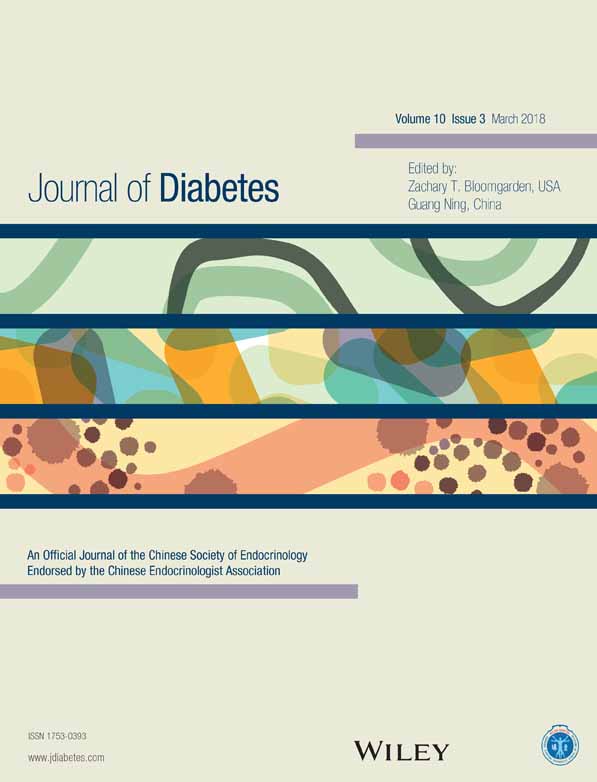Efficacy and safety of pregabalin for painful diabetic peripheral neuropathy in a population of Chinese patients: A randomized placebo-controlled trial†
普瑞巴林在中国痛性糖尿病周围神经病变患者治疗中的疗效及安全性:一项随机安慰剂对照试验
Abstract
enBackground
Limited information exists regarding the efficacy of pregabalin in Chinese patients with painful diabetic peripheral neuropathy (pDPN).
Methods
An 11-week double-blind placebo-controlled trial was performed in Chinese pDPN patients randomized (1 : 1) to 300 mg/day pregabalin or placebo. The primary outcome was change from baseline to endpoint in mean pain score (MPS; 0, no pain; 10, worst possible pain; using the mean of the last seven daily pain scores). Secondary outcomes included weekly MPS and responder status (MPS reduced by ≥30% or ≥50% vs baseline). Subgroup analysis assessed patients with severe (≥7) baseline MPS. Adverse events (AEs) were reported.
Results
In all, 620 patients were randomized (pregabalin, n = 313; placebo, n = 307). Improvement in MPS with pregabalin versus placebo was not significant (P = 0.0559). Post hoc sensitivity analyses, excluding one patient/site due to Good Clinical Practice (GCP) non-compliance, showed pregabalin significantly improved MPS when excluding the patient (P = 0.0448) or site (P = 0.0142). Pregabalin significantly improved weekly MPS (P = 0.0164) and ≥50% responders at endpoint (P = 0.0384). Improvement in proportion of ≥30% responders, impression of change, pain intensity, and sleep did not differ significantly between the treatment groups. In the severe pDPN subpopulation, pregabalin significantly improved MPS versus placebo (P = 0.0040). The most commonly reported AE was dizziness (9.6% vs 3.9% with placebo).
Conclusions
Pregabalin did not significantly improve the primary measure of pain in the trial. Significant reductions in MPS were observed when excluding the GCP non-compliant patient/site and in the severe pDPN subpopulation. Pregabalin was well tolerated in Chinese pDPN patients.
摘要
zh背景
普瑞巴林用于中国糖尿病痛性周围神经病变(painful diabetic peripheral neuropathy, pDPN)患者的疗效的相关信息有限。
方法
一项为期11周的双盲安慰剂对照临床试验, 来自中国的pDPN患者按1:1比例随机分配至普瑞巴林组(300 mg/天)或安慰剂组。主要终点为平均疼痛评分(mean pain score, MPS)从基线至试验终点时的变化。MPS等级分为0-10级(0分, 没有疼痛;10分, 最严重疼痛)。采用评估前7天的MPS均值。次要终点包括每周MPS以及治疗反应应答(与基线相比, 疼痛缓解达到≥ 30%或≥ 50%)。亚组分析包括基线MPS≥ 7的严重疼痛患者。同时报告不良事件。
结果
共620例患者随机入组, 其中普瑞巴林组313例, 安慰剂组307例。两组间MPS 的改善无统计学差异(P = 0.0559)。剔除了不符合良好的临床实践规范(Good Clinical Practice, GCP)的患者/中心的事后敏感性分析提示:剔除不符合GCP的患者(P = 0.0448)或是中心(P = 0.0142)后, 普瑞巴林均能改善MPS。普瑞巴林显著改善每周MPS(P = 0.0164), 且治疗反应应答≥ 50%患者优于安慰剂组(P = 0.0384)。但是反应应答≥ 30%患者比例的改善、对改变的印象、疼痛的强度、睡眠的改善在治疗组和安慰剂组间没有显著差异。对重度pDPN患者的亚组分析显示:与安慰剂相比, 普瑞巴林治疗显著改善MPS(P = 0.0040)。最常见不良事件为眩晕(普瑞巴林组为9.6%, 安慰剂组为3.9%)。
结论
本项试验未发现普瑞巴林能够显著改善疼痛症状。但在将不符合GCP的患者/中心排除后, 以及在重度pDPN患者亚组中MPS均有显著的下降。普瑞巴林在中国pDPN患者中耐受性良好。




